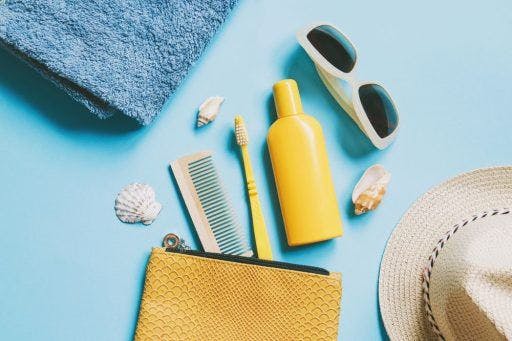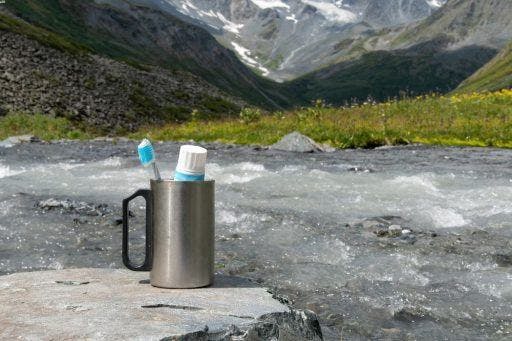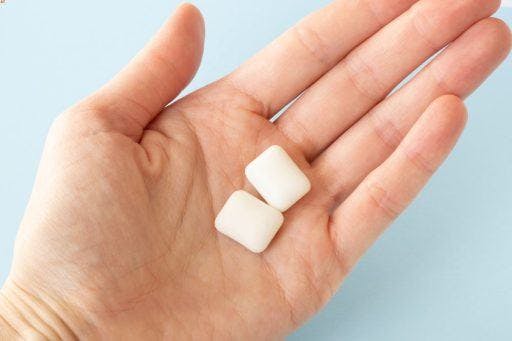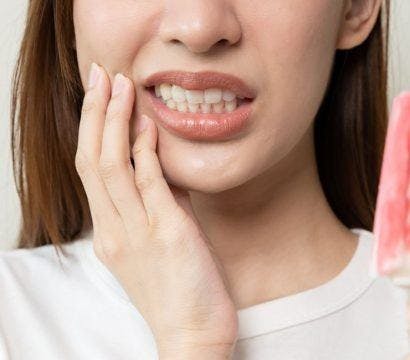Travelling shouldn’t be an excuse to slip into bad oral care habits! Your health and wellness are lifetime investments, so don’t let yourself go while you’re on the go. Keep up with your dental care and hygiene routine no matter where you are by following these simple tips.
Tip #1: Pack Your Oral Care Necessities

Most hotels will offer complimentary hygiene kits for guests, but you can never be sure if they’ll suit your needs. Maybe you have sensitive teeth, or you prefer flavoured toothpaste. So, it’s always better to bring your own essentials. Check these off your list: a soft-bristled toothbrush, high-fluoride toothpaste, and dental floss. If you travel often, consider having a dedicated “go bag” of these items for more efficient packing. You’d be less likely to forget anything on future trips, too!
Tip #2: Give Your Toothbrush Its Own Space
According to the American Dental Association (ADA), “Keeping your toothbrush clean and out of contact with other things is more important […] on vacation.” Toothbrush caps, holders, and resealable plastic bags work great here. However, you should ensure your toothbrush is dry before storing it in a (clean!) container. Damp, enclosed spaces are a breeding ground for bacteria. Once you get to where you’re staying, take out your toothbrush and stand it upright in a well-ventilated area so it can air-dry between uses.
Tip #3: Check the Water Quality at Your Destination

The tap water in some locations may not be safe for consumption, so be cautious. And this doesn’t apply solely to cities – even fresh water from streams or lakes can be compromised. Keep that in mind when venturing into the great outdoors! When in doubt, opt for bottled water when gargling or brushing your teeth. The ADA also advises replacing your toothbrush if water from an unfamiliar source gets on it.
Tip #4: Stick to Your Usual Oral Hygiene Routine
Travelling can be stressful and exhausting, so you might give in to temptation and skip your hygiene routine entirely. But no matter how tired you may be, you should never forgo brushing and flossing. Think about all the plaque that builds up throughout the day while you hop from location to location. Yikes! Surely, you can spare a few minutes for your oral-dental health twice daily.
Tip #5: Store Removable Orthodontics Properly

Proper upkeep of removable orthodontic appliances, like ClearCorrect aligners, includes storing them in their protective case when you take them off. Are you snacking in the car during a road trip or playing an ultra-competitive game of beach volleyball? Store your aligners, tuck the case in your bag, and pop them back on right after.
Remember: you should wear your aligners for at least 22 hours daily. Being on vacation is not an excuse to skip using them! And when they’re not in your mouth, always keep them safe in proper storage. Don’t jeopardise your treatment or teeth care just because you’re travelling.
Tip #6: Avoid Overindulging in Sugar and Acids
Going on holiday is all about indulgence – but try not to treat yourself to the point of irreversible damage. Fizzy drinks, sweet-sour candies, and crunchy crisps are delightful snacks, but they’re also some of the worst culprits behind dental erosion and tooth decay. Moderation is key! For balance, drink lots of water to keep abrasive acids from coating your teeth and save room for fresh produce.
Tip #7: Keep a Pack of Sugar-Free Gum Handy

Aeroplanes are notorious for their low-humidity environment. As a result, passengers can feel dehydrated. It’s normal to see people slapping on a face mask during long-haul flights to keep their skin supple. But what do you do about dry mouth? First, drink water. The Aerospace Medical Association (AsMA) recommends consuming 0.25 litres (or eight ounces) of water per hour spent on a plane.
Then, keep your saliva flowing by chewing sugar-free gum for up to 20 minutes. Saliva helps neutralise acid, kill germs, and prevent bad breath. And when you’re travelling with limited access to a restroom to brush your teeth in, you can chew gum between meals as a temporary alternative.
Tip #8: Save Your Dentist’s Contact Information
Schedule a dentist appointment before your trip if you have existing concerns. The rigours of travel will only make it worse, so don’t put it off for when you get back. And in case of emergencies, you should have easy access to your regular dental health care provider. Save their info! Since they know your medical history, they can give you well-informed advice even if you’re miles away.
Follow these dental care tips to keep your oral health and hygiene in check wherever you go. Travelling becomes extra fun and fulfilling when you know you’re taking proper care of yourself!
References:
Aerospace Medical Association. (n.d.). Health Tips for Airline Travel. AsMA.org.
American Dental Association. (n.d.-a). 8 Travel Tips for Your Teeth. Mouth Healthy – Oral Health Information From the ADA.



